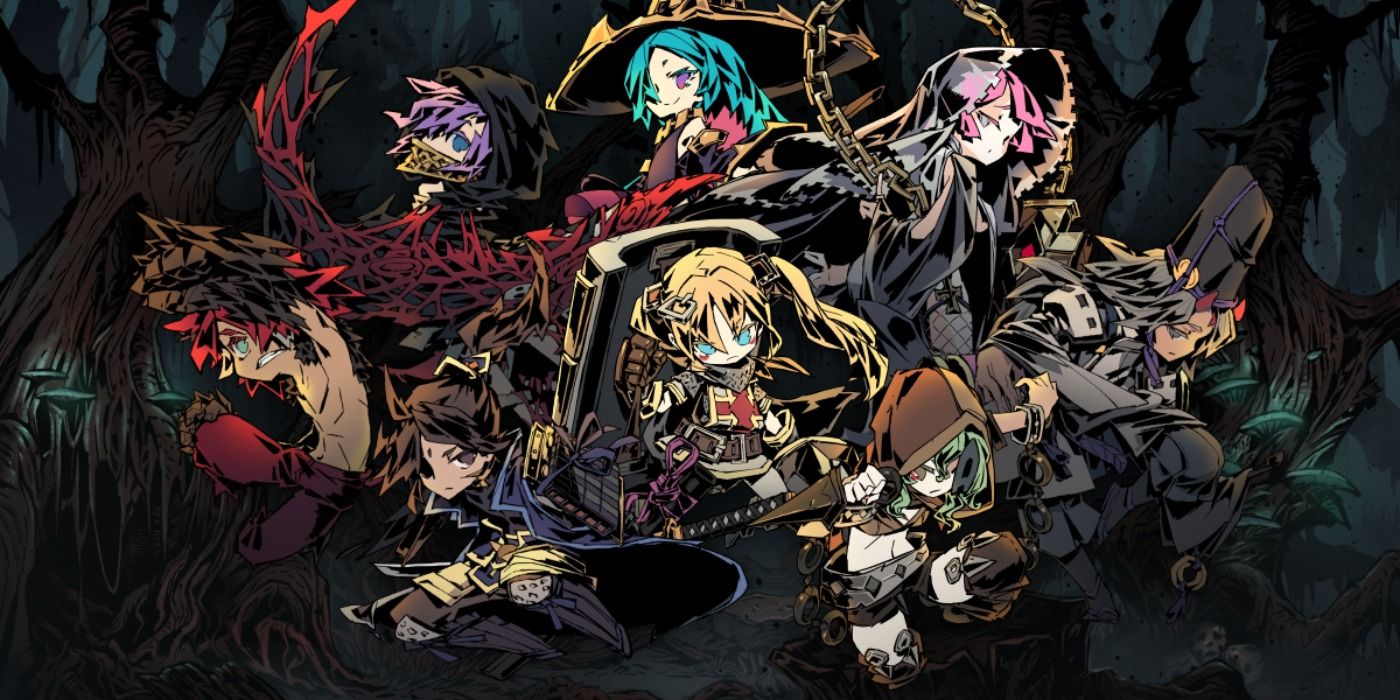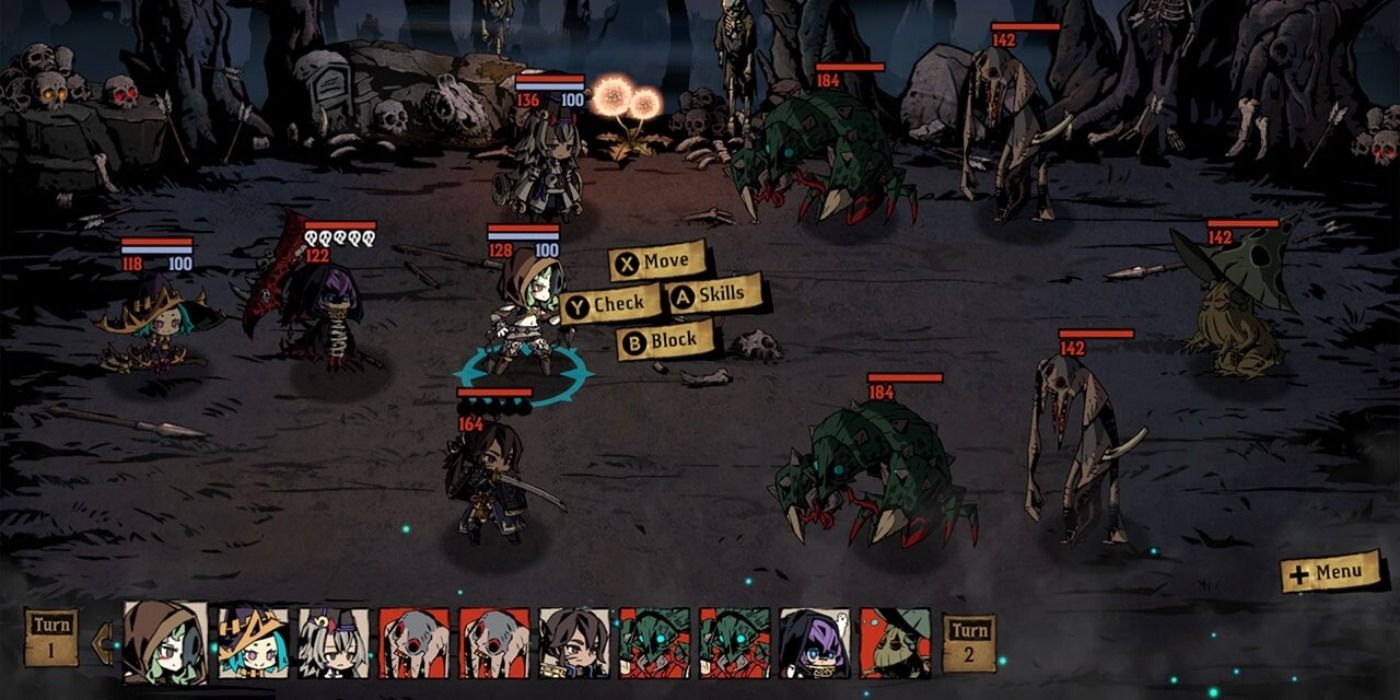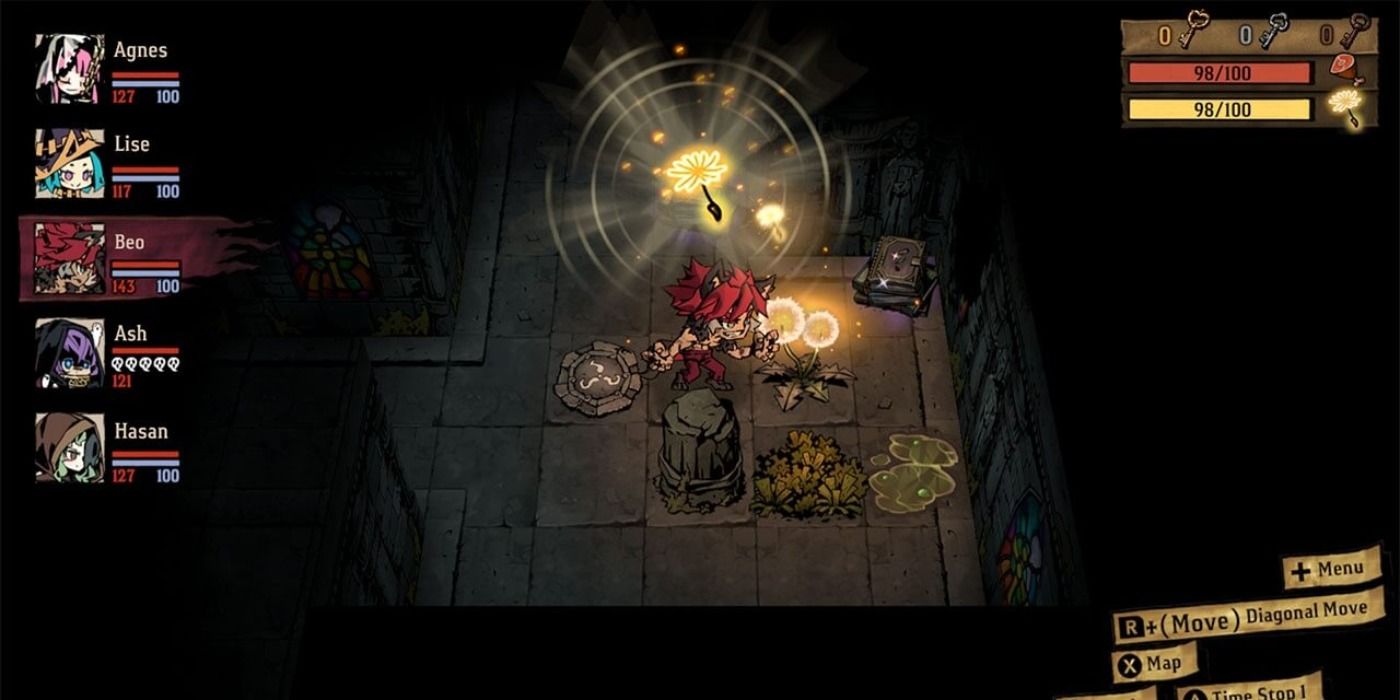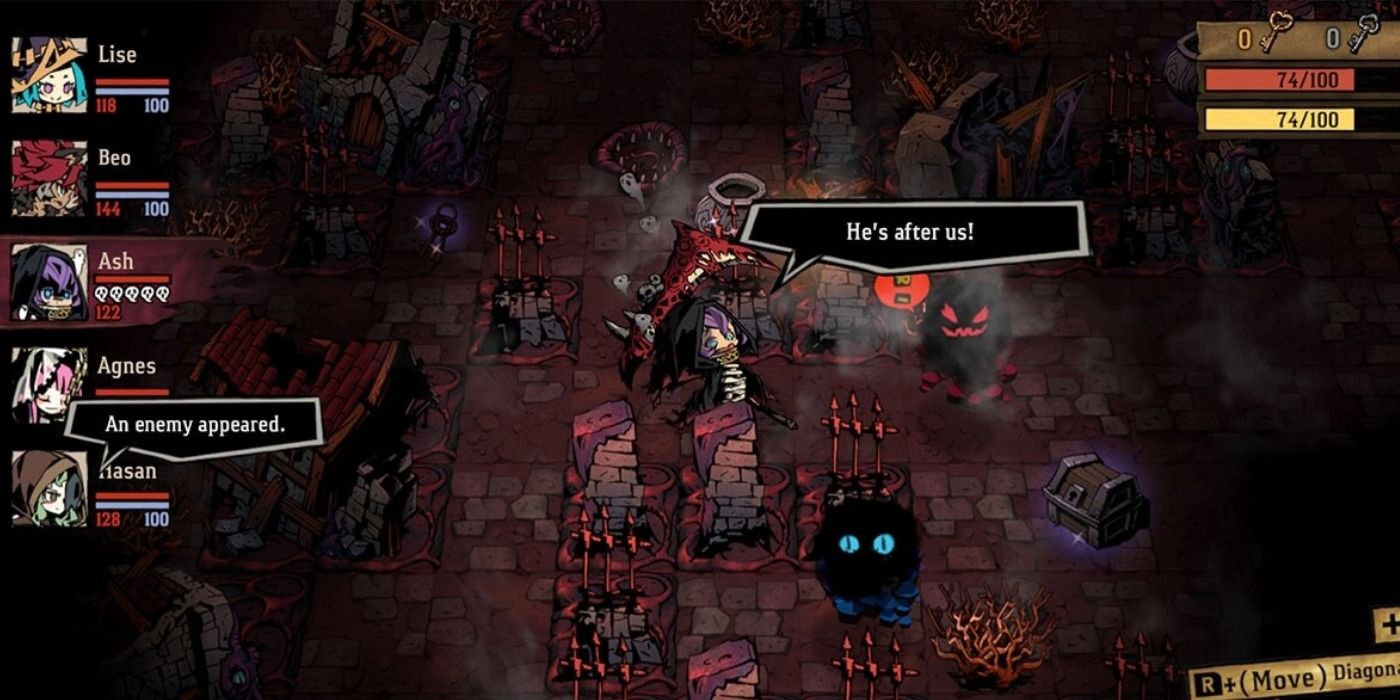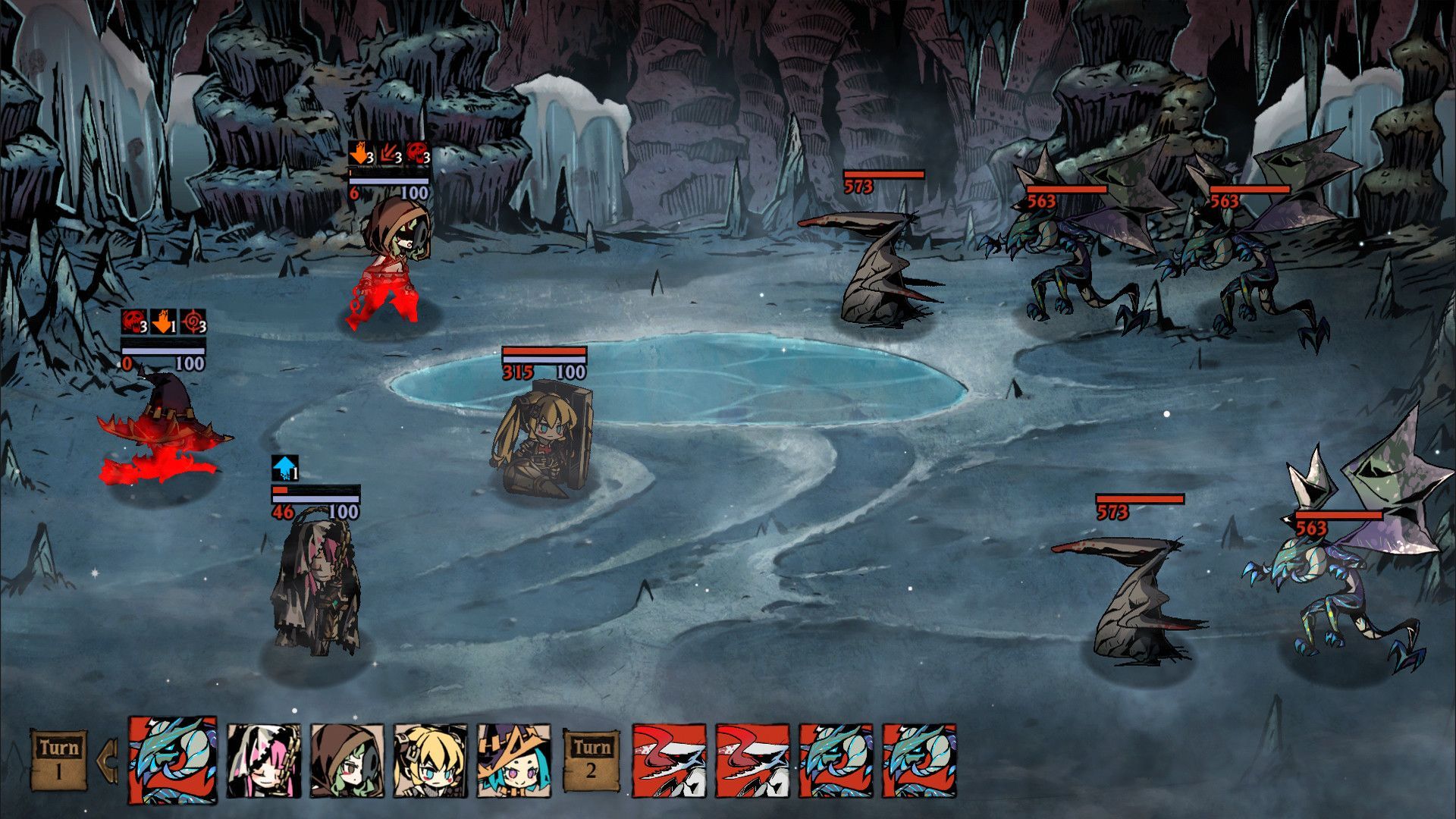Mistover is a roguelike game that combines elements of Darkest Dungeon and Radiant Historia in a fun, but sometimes frustrating experience.
Mistover is a game that combines the tactical RPG genre with the randomness of roguelike dungeons, and is heavily inspired by the survival elements of Darkest Dungeon. The gameplay of Mistover offers chaotic fun in a tense environment, as the player needs to guide their small party of adventurers through deadly dungeons in order to stop the end of the world in a package that is highly enjoyable but has some flaws in its execution.
The story of Mistover is set in a fantasy realm devastated by a huge vortex made of poisonous mist that came to be known as the Pillar of Despair. The realm was almost destroyed by an army of monsters that emerged from the mist and massacred countless people during the rampage. The monsters mysteriously stopped their invasion and returned to the Pillar of Despair without explanation. The player forms a party of adventurers who join an organization called the Expedition Corps who are tasked with entering the mist to discover the cause behind the original invasion.
The story of Mistover is just a framework for dungeon exploration and the characters that appear in the town are flat and functional. The similarities between Mistover and Darkest Dungeon are undeniable, except that Mistover uses anime-inspired visuals instead of gothic characters and monsters. The anime aesthetic might not be to everyone's' taste, especially those who are fans of Darkest Dungeon, but the visuals are at least striking. The similarities between Mistover and Darkest Dungeon are such that it should help scratch the itch until Darkest Dungeon 2 is finally released.
The gameplay of Mistover is similar to Darkest Dungeon (in the same manner as Deep Sky Derelicts) and the experience is broken up into three sections - the town, the dungeon, and the battlefield. The town is used for performing basic functions, such as buying items, recruiting or training their troops, and taking on new quests. When ready to enter the mists, players go to the Pier and visit one of the dungeons in the game. The dungeons use randomly determined layouts, with each one containing chests that need to be opened by specific keys, piles of debris that can contain items, flowers that shed light around the nearby area, and patrolling groups of monsters. It's possible to avoid monster encounters in Mistover, but the party will eventually be forced into battle if they want to survive long enough to reach the exit of the dungeon.
The battles in Mistover take place across two 3x3 grids, one for the player's side and one for the monsters. The positioning of party members on the grid is vitally important, as some moves can only be performed from certain positions. There are also powerful co-op moves that require a party member to be standing next to someone with a specific character class. The formation 0f your team can quickly descend into chaos, as certain actions and enemy attacks will force characters to move to different positions on the grid and prevent them from being able to use specific moves. It's possible to manually move a character a single space in any direction, but this costs them a turn. The chaos of movement on the battlefield in Mistover is a great concept and it's one of the highlights of the game, as it keeps combat fresh over the course of the story, especially as the same rules apply to monsters, who can also be forced to move based on the player's actions. The combat system of Mistover is similar to that of Radiant Historia (one of the best Nintendo DS games of all time) and the ever-shifting battlefield means that players cannot rely on the same tactics in each battle.
One of the most important aspects of dungeon delving in Mistover is resource management, as the party has both a Fullness and a Luminosity stat. Fullness represents the party's hunger and this depletes with every step that they take, while Luminosity represents their field of vision and this depletes in the same way. If the party runs out of food, they will take damage with every step, while running out of light allows monsters to easily get the jump on them. It's possible to bring food and light sources into the dungeon, but there is a risk/reward factor in doing so since these are expensive to purchase and gold is in short supply. If the party has consumable items remaining after they exit the dungeon, they become contaminated by the mist and lose most of their benefits. This means that the player must carefully decide how many items they will bring into the dungeon with them, as bringing too many means that they will be wasted after they leave while bringing too few put the party at risk of running out of food and light.
There is also a literal ticking clock hanging over the proceedings, in the form of the Doomsday Clock. Once the player exits the dungeon, they will see a giant clock that either moves time forward or backward. If the Doomsday Clock keeps moving forward and strikes midnight, then the monsters will emerge from the mist and it will be a permanent game over. It's possible to push the Doomsday Clock back by performing well in missions, such as by killing lots of monsters, finding lots of treasure, and lighting all of the flowers in the dungeon, but this means that the player must put their party at greater risk in order to complete these tasks. The risk/reward aspect of Mistover fully comes into play in regards to keeping the Doomsday Clock at bay and the game can be unforgiving to players who want to try and clean out dungeons, due to the permadeath mechanics and the auto-saving feature.
If a party member dies in Mistover, they are placed at a zero hit point state for a short period of time and the other party members can potentially heal them if they can act quick enough to cast a spell or use a potion. If the party member cannot hold on though, then they will permanently die and their equipment will become cursed. Mistover automatically saves after every action in a similar manner to the Dark Souls games, so there is no save-scumming or second chances. The permadeath system can lead to some frustrating moments where enemies dogpile on a single character and wipe them out in a single turn, especially as there is an abundance of debuffs and status effects that can prevent healer characters from taking their action.
Mistover delivers a number of small frustrations that build up over the course of a lengthy play session, one of which is needing to manually reset the party formation after each battle - a chore throughout the dungeon. The battles can get slow and repetitive, as monster encounters will regenerate over time, not providing any benefits for defeating them again. An option to speed up battles would greatly benefit the game, as well as being able to switch off the animations in combat. The town element of Mistover forces players to visit different buildings in order to perform functions that could easily have been combined into a single menu, which leads to extra busywork and load screens when trying to sort out the equipment for the party.
Mistover is a game that is best experienced in short bursts, with the player clearing out a dungeon or two and upgrading their party in each session. The frustrating aspects of the game become more pronounced over lengthy play sessions and the unforgiving nature of both the dungeons and the Doomsday Clock will grate on players over time. Mistover is not for the faint of heart and it can be punishing to players who don't carefully weigh their actions beforehand, but overcoming challenges is followed by euphoria and conquering the mists of Mistover can be as satisfying as crushing any Dark Souls boss.
Mistover is available for Nintendo Switch, PC, and PlayStation 4 on October 10, 2019. A Switch copy of the game was provided to Screen Rant for the purposes of this review.

